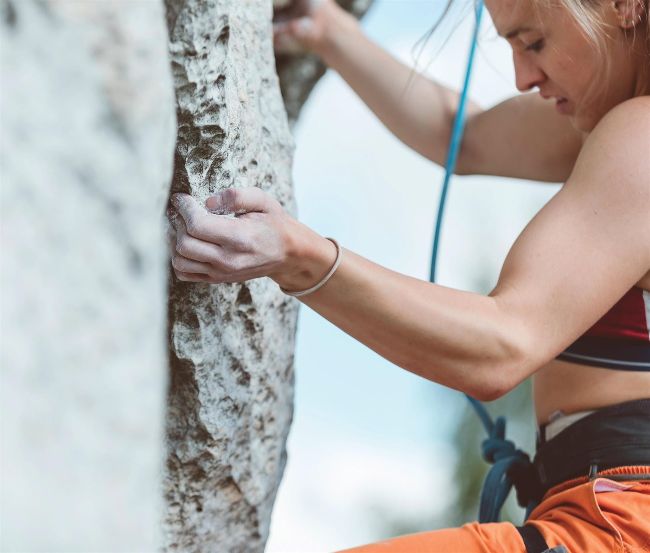Why not try...Climbing?
How can climbing be good for our running? Isn’t it all about using your arms? Be prepared, as we bust some myths – and get ready to meet your new favourite sport
Words: Jenny Scott

Climbing builds upper and lower body strength, as well as refining mental agaility
Running is a fantastic sport for cardiovascular health, endurance and mental clarity, but even the most dedicated runners need to mix up their training to stay motivated, prevent injury and enhance their fitness. Enter climbing; an exhilarating and challenging sport that offers huge benefits for runners.
Climbing is a full-body workout that builds strength, flexibility, balance and mental resiIiance, ticking all the boxes when it comes to completing a diverse training plan. It engages different muscle groups, enhances core stability and improves upper body strength, all of which are areas that running alone might not fully develop.
But that’s not all. Climbing requires short bursts of power and coordination, adding a dynamic alternative to your training plan that will literally take your running to new heights.
Types of climbing “While climbing is the most common catch-all term for the sport, there are three distinct disciplines within climbing for newcomers to try,” explains Ollie Rooke, Head of Marketing at London Climbing Centres.
• Bouldering. This discipline involves climbing on low-height walls, typically around four metres high, without the use of ropes or a harness and with large crash matting underneath to protect you in case of a fall. Bouldering is the most popular discipline, particularly favoured by urban climbers who enjoy the convenience and social aspects of the sport. “It’s perfect for those in cities who want a sport they can try on their own or without needing the help of an experienced climber. If you’re ready to give climbing a go, a bouldering centre is the best place to begin,” says Ollie.
• Roped climbing.With roped climbing, climbers use a harness and rope with a belay partner ensuring their safety by adjusting tension on the rope. This discipline requires more equipment and some initial instruction. Typically, you’ll be supervised by an experienced climber at a roped centre, or pay for an instructed session to learn the ropes. Roped climbing can be divided further into top-rope climbing, where the rope is already anchored at the top of the route, and lead climbing, where the climber clips the rope into anchors as they ascend.
Leggete l'articolo completo e molti altri in questo numero di
Women’s Running
Opzioni di acquisto di seguito
Se il problema è vostro,
Accesso
per leggere subito l'articolo completo.
Singolo numero digitale
Aug 2024
Questo numero e altri numeri arretrati non sono inclusi in un nuovo
abbonamento. Gli abbonamenti comprendono l'ultimo numero regolare e i nuovi numeri pubblicati durante l'abbonamento.
Women’s Running
Abbonamento digitale annuale
€42,99
fatturati annualmente